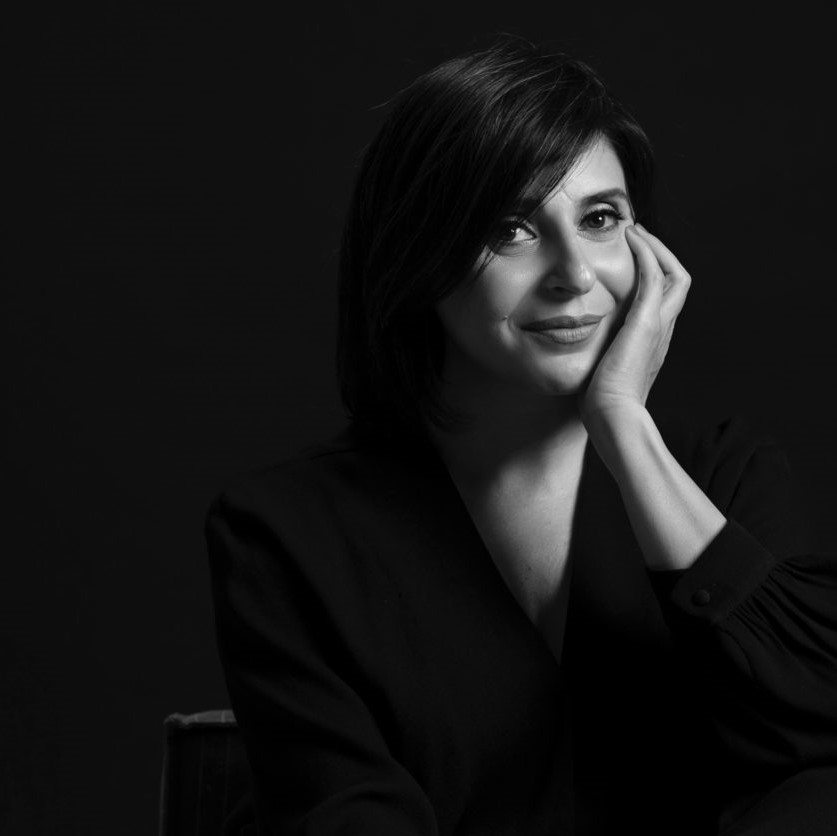
Beirut, the Aftermath, Fadia Ahmad's first feature documentary film was launched in 2021 where she seeks to portray the aftermath of the explosion that shook Lebanon to its core. The film was selected in many film festivals, won several awards. In 2022, Fadia Ahmad was featured in the Larousse (France) "L'Art Contemporain Par Les Femmes" as one of the 50 most influential women contemporary artists worldwide. 50 Shades of Blue, a photography exhibit was the highlight in February 2023, where it features the ways in which the color blue is used to evoke mood and atmosphere, from serene landscapes to dynamic cityscapes.
Selected Festivals in 2022

14 international contemporary artists meet through their artworks in Beirut, showcasing cultural exchange.
A collaborative effort of architects and interior designers has brought forth a collective presentation, wherein each contributor showcases their unique perspective on the current intersection of art and the dining experience.
An international fair of modern and contemporary art focused on the scenes of the Middle East and the Mediterranean Basin.
A fundraising exhibition curated by Victoria Latsheva Nasser in order to highlight the subject of migration in the middle east displaying 30 international artists from Lebanon, Syria, Iran, Russia, Austria, Morocco, and others. All proceeds go to a borderless NGO.
The 2019 Paris Biennale took place from 13 to 17 September at the Grand Palais in the 8th arrondissement of Paris.
Solo exhibition of Fadia Ahmad at ‘La Maison jaune”. The exhibition had 93 Art photography exposed with more than 10,000 local and international visitors.
Solo exhibition of Fadia Ahmad at ‘the Jordan National Gallery of Fine Arts ‘ In Amman, Jordan. There was 93 Art photographs exhibited with more than 4,000 local and international visitors.
A collective exhibition "From Peoria To Lebanon" by leading artists from Beirut.
An exhibition for the NGO Green Cedar Lebanon
Fadia Ahmad participated with the Lebanese Pavillon at the Expo.
The opening of a collective exhibition by the artists, for the artists
‘Rotating Art’ is a project that attempts to support artistic activity in Lebanon. It is a joint initiative of Banque Bemo and Commercial Insurance. The goal is to encourage the development of Art in Lebanon. An activity which came to a major halt following the covid pandemic and the port explosion in 2020.
Modern and Contemporary Art from Lebanon and the Middle East
The first internationally renowned photography festival since 1970. In addition to the participation of the book Beirut|Beyrouth by Fadia Ahmad at Arles Book Fair.
A solo exhibit of "When Life Hangs by a Thread" for the NGO , Ahla Fawda
Collective exhibit by Lebanese artists for the two year memorial of August 4th Beirut blast.
A benefit auction for the Lebanese American University.
A regional non- governmental and nonprofit foundation, aims at empowering children and youth to lead healthy lives. Fadia Ahamad was the photographer for their campaign 2022-2023.
Solo exhibition at the Lebanese American University.
Digital and New Media Collective Art Exhibition with BEYxART
UNDP , EU and USAID collective exhibition for the occasion of International Women's day
Showcasing some Lebanese artworks from the Jordan National Gallery of Fine Arts
A multidimensional exhibition featuring renowed Lebanese Artists at The Art Loft in Virginia, USA
Exhibition finale sunset soiree at the Art Loft , Virginia,USA
Fadia Ahmad has a sensitive and creative eye that observes everything with the deepest details, she looks into life in all its aspects and sees what we do not see. She captures the time and the fleeting moment.
Dr. Khalid KhreisDirector General of the Jordan National Gallery of Fine Arts.
Spontanéité et humanité décrivent l’œuvre de l’artiste au grand cœur, Fadia Ahmad. Ses pièces artistiques frappantes et émouvantes révèlent des messages cachés. Contempler ses œuvres dévoile un univers réel qui vire vers le surréel. On s’enrichit de l’art de la fabuleuse Fadia Ahmad.
Princess Ghida Talal
Fadia Ahmad's photography is not about holding a camera, pointing it in the right direction, and snapping a picture. It is about capturing a moment that has meaning, significance, parallelism between what is seen, and a concept that is deeper than what the eye captures.
Dr. Antoine Karam
Fadia Ahmad est une photographe engagée qui a su allier son art à la beauté de l’instant présent. J’ai un immense respect pour l’artiste mais aussi pour la femme ; elle incarne pour moi la force, la dignité et la sensibilité des femmes arabes contemporaines.
Elie SaabFashion Designer
Fadia Ahmad's art captivates the essence of humanity with profound storytelling. Her ability to create narratives through her lens is unparalleled. Fadia Ahmad's artistic vision and talent continue to inspire and leave a lasting impact.
Chaker KhazaalAuthor